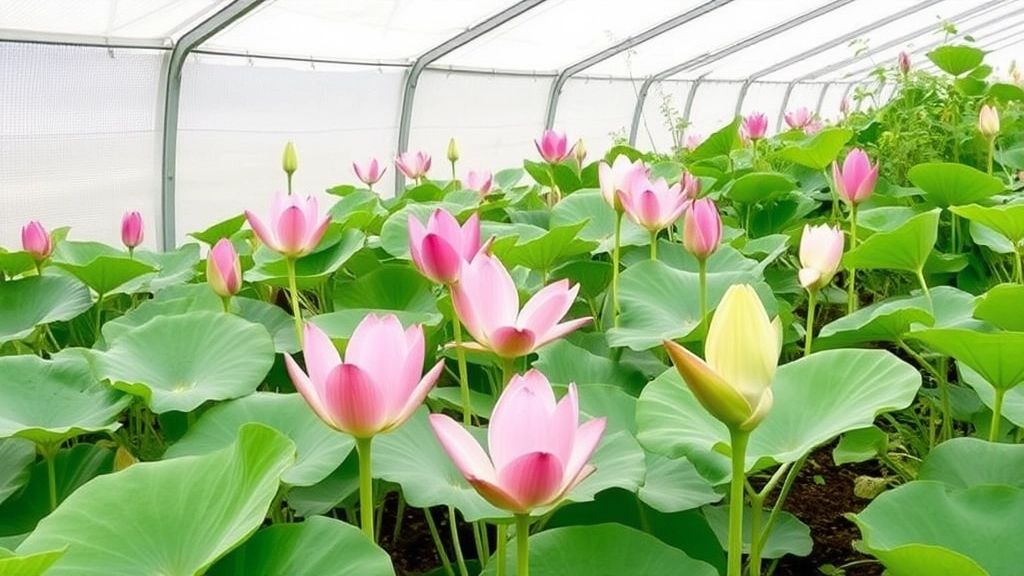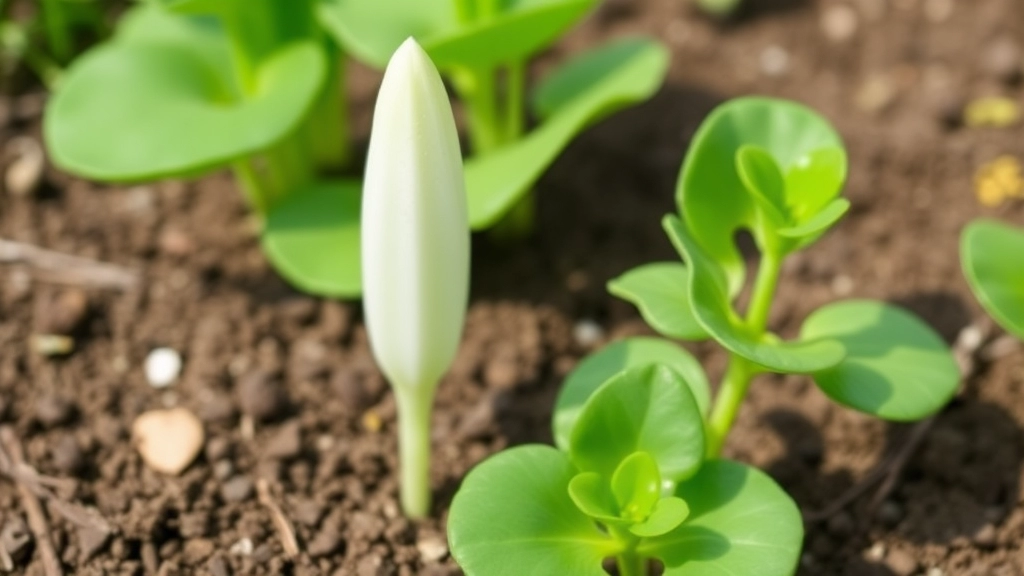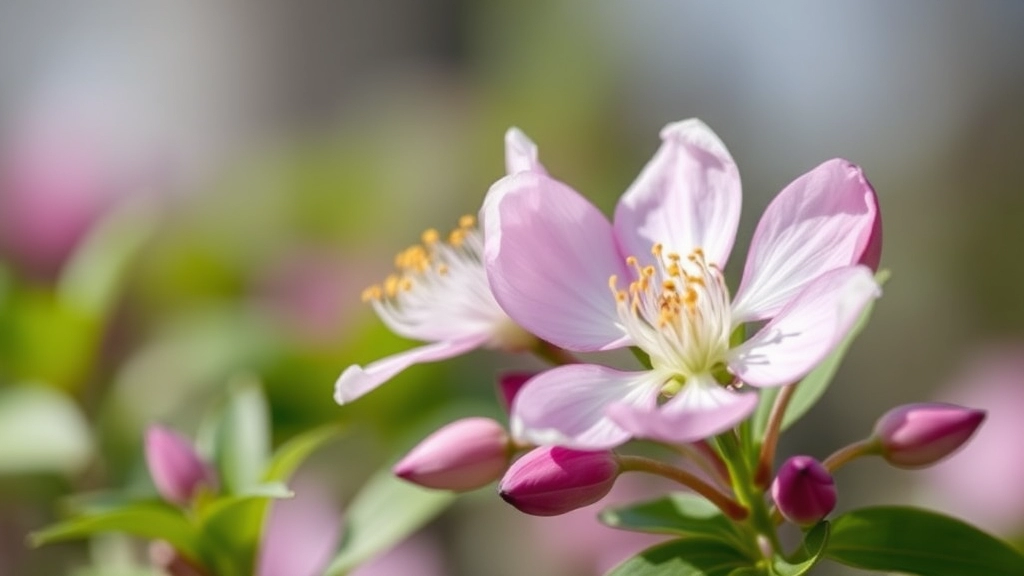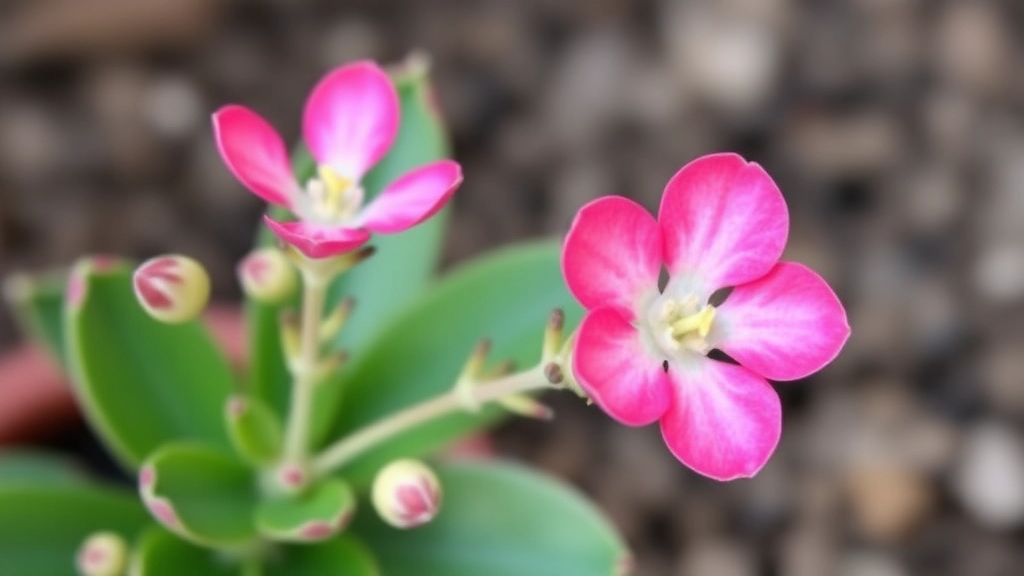Welcome to Your Ultimate Guide on the Kalanchoe Paddle Plant Flower!
If you’re keen on understanding the unique characteristics of this stunning succulent, you’re in the right place. I’ll walk you through the ideal growing conditions, watering techniques, and sunlight requirements to keep your plant vibrant and healthy. Whether you’re a seasoned gardener or a newbie, these tips will help you maintain your Kalanchoe Paddle Plant with ease.
We’ll also delve into common issues like sunburn and root rot, and how to prevent them. Plus, you’ll learn the best fertilizing practices, propagation techniques, and how to manage flowering for optimal plant life. By the end of this article, you’ll be well-equipped to choose the right pot and soil, ensuring your Kalanchoe Paddle Plant thrives. Let’s get started!
Characteristics of the Kalanchoe Paddle Plant
When considering the Kalanchoe Paddle Plant, one might wonder what makes it stand out among other succulent varieties.
This unique plant, also known as Kalanchoe luciae, is renowned for its striking, paddle-shaped leaves that can reach up to 12 inches in length.
Key Features:
- Leaf Shape: The leaves are thick, fleshy, and resemble paddles or spatulas, giving the plant its common name.
- Colouration: The foliage exhibits vibrant hues, often transitioning from green to shades of red or orange, especially when exposed to bright sunlight.
- Height: Typically, the paddle plant can grow up to 2 feet tall, making it an eye-catching addition to any indoor or outdoor space.
- Flowers: In the right conditions, it produces clusters of small, tubular flowers that can add a splash of colour, usually during the winter months.
These characteristics not only enhance the aesthetic appeal of the Kalanchoe Paddle Plant but also contribute to its popularity among succulent enthusiasts. For more information on different Kalanchoe species, you can explore the various Kalanchoe species or learn about the top Kalanchoe varieties and their traits.
Ideal Growing Conditions for Paddle Plants

So, you’ve got your Kalanchoe Paddle Plant, and now you’re wondering how to create the perfect environment for it to thrive. Trust me, getting the conditions right can make all the difference in how your plant looks and grows.
Temperature and Humidity
First off, paddle plants are pretty chill about temperature. They love warmth, ideally between 20°C to 30°C (68°F to 86°F).
- Avoid cold drafts: They’re not fans of chilly air, so keep them away from windows that might let in a draft.
- Humidity: They prefer low humidity, which makes them perfect for indoor settings. Too much moisture can lead to rot.
Soil Type
Next up is soil. Paddle plants aren’t picky, but they do need well-draining soil.
- Cactus mix: A cactus or succulent mix works wonders.
- DIY mix: You can also make your own by combining potting soil with sand or perlite for extra drainage.
Air Circulation
Good airflow is key. These plants thrive in environments where air can circulate freely.
- Avoid overcrowding: If you’ve got other plants nearby, give your paddle plant some space.
- Ventilation: A spot near an open window is perfect, as long as it’s not too cold.
Light Conditions
Finally, let’s talk about light. Paddle plants are sun worshippers!
- Bright, indirect light: They do best in bright, indirect sunlight. Direct sunlight can scorch their leaves.
- Supplemental lighting: If your home doesn’t get enough natural light, consider using grow lights.
How to Water Paddle Plants Properly
After understanding the ideal growing conditions for Kalanchoe paddle plants, watering becomes a crucial aspect of their care.
Many plant enthusiasts worry about overwatering or underwatering their paddle plants.
Here’s how to water them properly:
- Check the Soil Moisture: Before watering, stick your finger about an inch into the soil. If it feels dry, it’s time to water.
- Water Thoroughly: When you do water, ensure you soak the soil completely. This encourages deep root growth.
- Allow for Drainage: Ensure your pot has drainage holes. Excess water should escape to prevent root rot.
- Frequency Matters: Generally, paddle plants thrive on a watering schedule of every two to three weeks. Adjust based on the season; they need less water in winter.
- Use Room Temperature Water: Cold water can shock the plant. Room temperature water is gentler and more beneficial.
- Observe the Leaves: Droopy or wrinkled leaves may indicate underwatering, while yellowing leaves can signal overwatering.
By following these steps, you can ensure your paddle plant receives the right amount of water. For more detailed care instructions, check out our Optimal Care Guide for Kalanchoe Paddle Plant. Additionally, if you’re interested in expanding your succulent collection, explore our Ultimate Guide to Growing and Caring for Succulent Plant Kalanchoe.
Sunlight Requirements for Vibrant Leaf Colors

When it comes to nurturing your Kalanchoe Paddle Plant, understanding its sunlight needs is crucial for achieving those striking, vibrant leaf colours.
Why is Sunlight Important?
Many plant enthusiasts often wonder why their Paddle Plants may appear lacklustre or dull. The answer often lies in the quality and quantity of sunlight they receive.
Optimal Sunlight Exposure
- Direct Sunlight: Paddle Plants thrive best in bright, indirect sunlight. Aim for about 6 hours of indirect light each day.
- Morning Sun: If possible, place them where they can soak up morning sun. This gentle light is ideal for boosting colour vibrancy without scorching the leaves.
- Avoid Harsh Afternoon Sun: Too much direct sunlight, especially in the afternoon, can lead to burnt leaves.
Signs of Inadequate Light
Keep an eye out for these signs that your Paddle Plant may not be getting enough light:
- Leggy Growth: Stems stretching towards the light source.
- Faded Colours: Leaves losing their rich hues.
- Drooping Leaves: A sign of stress due to insufficient light.
Adjusting Light Conditions
If you notice any of these signs, consider relocating your plant to a brighter spot.
- Rotate Regularly: Rotate your plant every few weeks to ensure even light exposure on all sides.
- Use Grow Lights: If natural light is limited, consider using grow lights to supplement their needs.
By ensuring your Kalanchoe Paddle Plant receives the right amount of sunlight, you can enjoy those lush, colourful leaves that make this succulent so appealing.
Tips for Preventing and Handling Common Issues
As we delve into the care of Kalanchoe Paddle Plants, it’s essential to address potential problems that may arise. Understanding how to prevent and handle these common issues can ensure your plant thrives.
Common Problems and Solutions
- Overwatering
- Signs: Yellowing leaves, mushy stems.
- Solution: Allow the soil to dry out completely between waterings. Use well-draining soil to prevent water retention.
- Underwatering
- Signs: Wrinkled, shrivelled leaves.
- Solution: Water thoroughly when the top inch of soil feels dry. Ensure your pot has drainage holes.
- Pest Infestations
- Common Pests: Mealybugs, aphids.
- Solution: Regularly inspect your plant. If pests are found, wipe them off with a damp cloth or use insecticidal soap.
- Leaf Drop
- Causes: Sudden temperature changes, stress from relocation.
- Solution: Keep your plant in a stable environment. Avoid moving it frequently.
- Poor Growth
- Signs: Stunted growth or leggy appearance.
- Solution: Ensure adequate sunlight and proper fertilisation. Check for rootbound conditions if in a pot.
Preventative Measures
- Regular Maintenance: Inspect your plant weekly for signs of stress or pests.
- Proper Placement: Choose a location that meets its sunlight needs while avoiding drafts.
- Soil Health: Refresh the soil every couple of years to maintain nutrient levels.
By staying vigilant and proactive, you can tackle these common issues before they escalate. For more detailed care tips, check out our Kalanchoe Paddle Plant Care Guide. Additionally, if you encounter specific challenges, our Pruning Kalanchoe Plants article offers targeted solutions.
How and When to Fertilize Paddle Plants

So, you’ve got your Kalanchoe Paddle Plant thriving, but how do you keep it looking its best? One key aspect is fertilization. If you’re wondering when and how to fertilize your paddle plants, you’re in the right place!
When to Fertilize
Timing is everything when it comes to fertilizing your paddle plants.
- Spring and Summer: This is the prime growing season. Fertilizing during these months gives your plant the boost it needs to grow strong and vibrant.
- Fall and Winter: Hold off on fertilizing during these cooler months. Your paddle plant goes into a sort of dormancy, and it doesn’t need extra nutrients.
How to Fertilize
Now, let’s talk about the actual fertilization process. It’s easier than you might think!
- Choose the Right Fertilizer: Look for a balanced, water-soluble fertilizer. Something like a 10-10-10 or a specific succulent blend works wonders.
- Dilute It: Always dilute the fertilizer to half the recommended strength. Paddle plants are sensitive, and too much can harm them.
- Frequency: Fertilize every 4-6 weeks during the growing season. This keeps the nutrients flowing without overwhelming your plant.
Tips for Fertilizing Success
Here are a few handy tips to ensure your fertilizing game is on point:
- Water First: Always water your plant before applying fertilizer. This helps prevent root burn.
- Observe Your Plant: If you notice yellowing leaves, it might be a sign of nutrient deficiency. Adjust your fertilizing routine accordingly.
- Avoid Over-Fertilizing: Less is often more. Too much fertilizer can lead to salt build-up, which can be detrimental.
By keeping these tips in mind, you’ll ensure your Kalanchoe Paddle Plant gets the nutrients it needs without overdoing it.
Propagating Kalanchoe Paddle Plants: Best Techniques
Many plant enthusiasts often wonder how to propagate Kalanchoe Paddle Plants effectively.
The good news is that these resilient plants are quite forgiving and can be propagated using simple techniques.
How to Manage Flowering and Its Impact on Plant Life

So, you’ve got your Kalanchoe Paddle Plant thriving, and now you’re wondering about flowering.
Why Does Flowering Matter?
Flowering can be a big deal for your paddle plant. It’s a sign that your plant is happy and healthy, but it can also take a toll on its overall vitality.
What to Expect When Your Paddle Plant Blooms:
- Energy Drain: When your plant flowers, it uses a lot of energy. This means it might slow down its growth or even drop some leaves.
- Shorter Lifespan: If you let it flower too often, you might notice a decline in its health over time.
Managing the Flowering Process:
- Timing is Key:
- Let it flower during the growing season (spring to summer).
- If it blooms in winter, consider trimming the flower stalks to redirect energy back into the leaves.
- Pruning After Flowering:
- Once the flowers fade, don’t hesitate to prune. This helps the plant focus on healthy growth.
- Cut back any dead or wilted flowers to keep it looking fresh.
- Monitor Watering:
- During the flowering phase, keep an eye on your watering routine.
- Slightly reduce water to prevent root rot.
- Fertilizer Adjustments:
- Use a balanced fertiliser during blooming to support flower health.
- After flowering, switch back to a low-nitrogen formula to encourage leaf growth.
- Light Levels:
- Ensure your paddle plant is getting enough light.
- Too much shade can lead to weak flowers and leggy growth.
When to Worry:
If your paddle plant is flowering excessively or not at all, it might be time to reassess its environment.
- Too Much Stress: High temperatures or low light can cause stress, affecting flowering.
- Nutrient Deficiency: If it’s not blooming, check if it’s getting the right nutrients.
By managing the flowering process effectively, you’ll help your Kalanchoe Paddle Plant thrive and maintain its vibrant health.
Choosing the Right Pot and Soil for Optimal Growth
When it comes to nurturing your Kalanchoe Paddle Plant, selecting the right pot and soil is crucial for ensuring optimal growth.
Pot Selection:
- Size Matters: Choose a pot that is slightly larger than the plant’s root ball. A pot that is too big can retain excess moisture, leading to root rot.
- Drainage is Key: Ensure the pot has drainage holes. This allows excess water to escape, preventing waterlogged soil.
- Material Choices: Terracotta pots are excellent for paddle plants as they provide breathability and help wick away excess moisture. Plastic pots are lighter and can retain moisture better, but ensure they have drainage features.
Soil Requirements:
- Well-Draining Soil: Use a cactus or succulent mix, which is designed to drain quickly and prevent soggy roots.
- pH Balance: Aim for a slightly acidic to neutral pH (around 6.0 to 7.0) for optimal nutrient absorption.
- Additives for Aeration: Consider mixing in perlite or coarse sand to improve drainage and aeration.
By focusing on the right pot and soil, you create a supportive environment for your paddle plant, allowing it to thrive. For more detailed care tips, check out our Kalanchoe Paddle Plant Care Guide. Additionally, if you’re interested in learning about other Kalanchoe varieties, explore our Comprehensive Kalanchoe Species List.
FAQs About Kalanchoe Paddle Plant Flower
What are the ideal growing conditions for a Kalanchoe Paddle Plant?
The ideal growing conditions include a temperature range of 20°C to 30°C (68°F to 86°F), low humidity, well-draining soil, good air circulation, and bright, indirect light.
What type of soil is best for Paddle Plants?
Paddle plants thrive in well-draining soil. A cactus or succulent mix is ideal, or you can create your own mix by combining potting soil with sand or perlite.
How much sunlight does a Paddle Plant need?
Paddle Plants need about 6 hours of bright, indirect sunlight each day. Morning sun is ideal, while harsh afternoon sunlight should be avoided to prevent leaf scorching.
What are the signs that my Paddle Plant is not getting enough light?
Signs include leggy growth, faded leaf colors, and drooping leaves. If you notice these symptoms, consider relocating your plant to a brighter spot or using grow lights.
When and how should I fertilize my Paddle Plant?
Fertilize during the spring and summer months using a balanced, water-soluble fertilizer diluted to half strength. Avoid fertilizing in fall and winter. Apply fertilizer every 4-6 weeks during the growing season.
How should I manage the flowering of my Paddle Plant?
Allow flowering during the growing season. Prune faded flowers to help the plant focus on healthy growth. Adjust watering and fertilizing routines during the flowering phase to support the plant’s health.
What should I do if my Paddle Plant is flowering excessively or not at all?
Reassess the plant’s environment. High stress from temperatures or low light can affect flowering. Ensure the plant is receiving the right nutrients and light levels.
Why is my Paddle Plant’s growth slowing down?
Flowering can drain the plant’s energy, leading to slower growth. Regular pruning and appropriate fertilization can help manage this.
Can I use regular potting soil for my Paddle Plant?
Regular potting soil can be used if mixed with sand or perlite to improve drainage. However, a cactus or succulent mix is recommended for optimal growth.
What should I do if my Paddle Plant’s leaves are turning yellow?
Yellowing leaves can indicate nutrient deficiency or over-fertilization. Adjust your fertilizing routine and ensure the plant is not overwatered.
References
-
The Spruce – Paddle Plant (Kalanchoe Thyrsiflora) Care & Growing Guide
-
Gardening Know How – Paddle Plant Care: Growing Kalanchoe Thyrsiflora
-
House Plants Expert – Kalanchoe Thyrsiflora (Paddle Plant)
